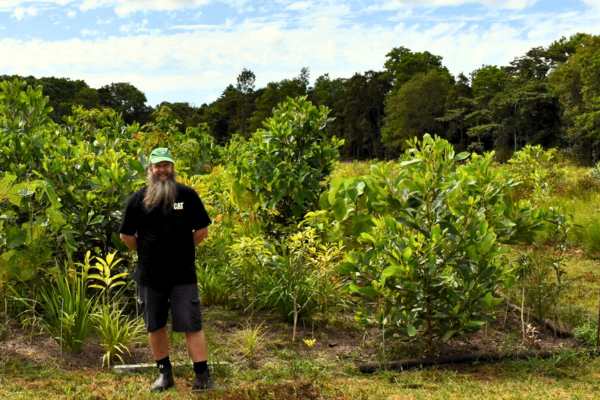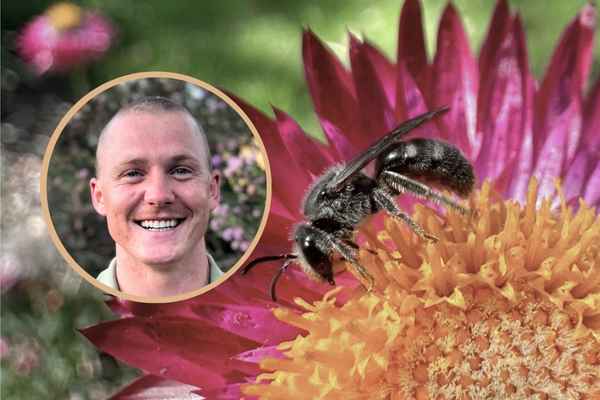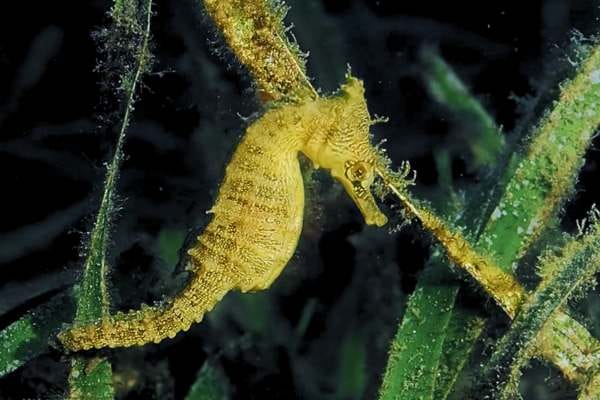Pocket forests sprout up nationwide
Tiny native forests based on a 1970s planting method developed by a Japanese botanist are taking root across the country.

Two months ago, an aged-care facility in the NSW central western town of Orange became the first in Australia to host a community ‘pocket forest’.
Residents, staff and volunteers planted 900 local trees and shrubs close together in nutrient-rich soil across a 300-square-metre plot at the Benjamin Short Grove facility operated by Mission Australia.
Within a few short years, the site is expected to develop a layered canopy, shrub and ground cover that will cool the grounds, attract wildlife and provide a tranquil sensory refuge, according to project partners Carbon Positive Australia and The Groundswell Collective.
The initiative, the first in an aged care setting, reflects a broader movement across Australia to rewild overlooked urban pockets in community spaces.
Experts say thousands have now been planted globally, as schools, neighbourhood groups, scientists, councils and volunteers pitch in to transform small scraps of land, from the size of a single car parking spot up to a tennis court, into pockets of native habitat.
The Groundswell Collective, based in the Hunter region of NSW, says it has now partnered on 17 tiny forests at schools and parks across the state, in addition to its aged-care project.
“The forest will be home to nearly 1,000 local endemic trees and shrubs, greatly enhancing the biodiversity of the local area and bringing life to an unused strip of grass at Benjamin Short Grove."
Pocket forests – also known as tiny forests, mini forests or Miyawaki forests – follow a formula: enrich the soil, then densely plant a diverse palette of local species at around three to five plants per square metre. The method was developed by Japanese botanist Dr Akira Miyawaki in the 1970s.
The tight planting kickstarts rapid growth, according to Carbon Positive Australia, with pocket forests capable of maturing up to 10 times faster than more traditional planting methods and supporting up to 18 times more biodiversity.
They can also help cool cities, slow stormwater runoff, improve soil health, sequester carbon and provide habitat for wildlife and pollinators, their proponents say.
Benjamin Short Grove accommodates up to 60 people from the Orange region who are experiencing or are at risk of homelessness, or who face financial or social disadvantage. Pocket forests bring an added social benefit: they reconnect people with nature, says Carbon Positive Australia program lead Stephanie Poly.
“We hope that this community pocket forest project, the first of its kind at an aged care facility, will reduce social isolation among residents and improve their physical and mental wellbeing as they connect with nature and each other,” she said.
“Residents will be able to care for the forest and see it grow, taking ownership of the plants and engaging in nature-based activities.”
Groundswell Collective founder Anna Noon added: “The forest will be home to nearly 1,000 local endemic trees and shrubs, greatly enhancing the biodiversity of the local area and bringing life to an unused strip of grass at Benjamin Short Grove.
“We look forward to seeing this forest grow and hearing about the impact it has on both residents and staff.”
State of play
Western Australia has also embraced the movement, largely through Murdoch University’s Harry Butler Institute (HBI) and its Pocket Forests WA program, which focuses on creating forests in school settings.
Led by HBI researcher Dr Grey Coupland, the program now supports several Miyawaki forest sites around Perth, pairing hands-on planting with a citizen-science initiative.
Their research examines the ecological and restoration potential of pocket forests in Australian environments, with students monitoring soil moisture, biodiversity, temperature and growth rates.
As Pocket Forests WA explains: “In the program, students get their hands dirty collecting food and other organic waste from within their school and the broader community to generate compost for forest site soil remediation.
“Then they plant their very own pocket forest. Following planting, students act as citizen scientists, monitoring their Miyawaki forest as it grows.”
Restoring corridors
By creating hubs and networks of miniature forests, the hope is that pocket forests might eventually help reconnect fragmented habitats, giving wildlife and pollinators safe passage through urban and agricultural landscapes.
In Far North Queensland, two pilot forests were planted near Tully to transform degraded farmland into a wildlife corridor. The first was planted in 2017 by Brettacorp – a not-for-profit founded by Brett Krause to restore native forests on Queensland's Cassowary Coast – with several more planted since.
South Australia established its first Miyawaki-style forest in August 2023 at Adelaide’s Victoria Park / Pakapakanthi Wetland. The project, led by community-volunteer group Green Pakapakanthi in partnership with Earthwatch Australia, is notable for its wetland setting and consists of 450 endemic shrubs and small trees.
Further south in Tasmania, Clarence High School students planted more than 100 indigenous species earlier this year to create their own on-campus pocket forest in partnership with Landcare Tasmania and the Bellerive-Howrah Coastcare Group.
“Students' involvement supports not just indigenous species, but also future learning spaces, shade, and a stronger connection to nature,” Landcare Tasmania said of the project.
A local approach
To get involved in the movement, experts suggest joining community forest or land-care groups, participating in planting days, or restoring vegetation in private gardens or street verges using native plants.
Clancy Lester, an ecologist focused on protecting Australia’s native bees, says backyards can also play a powerful role in the survival of native pollinators, which are under pressure from habitat loss.
“One of the simplest yet most powerful ways individuals can help native bees is by planting indigenous flora in backyards and local reserves,” he recently told TZP.
Lester also encourages communities to speak with local councils about turning lawn-covered nature strips into native pollinator patches.
Pocket forests rely on the Miyawaki method, a Japanese technique from the 1970s now adopted around the world. The approach enriches the soil, then layers 30 or more endemic species, from canopy trees to understory plants, shrubs and groundcovers, at densities of three to five plants per square metre. According to Carbon Positive Australia, these compact forests grow up to 10 times faster than conventional reforestation, and support up to 18 times more biodiversity. Proponents also highlight added benefits: urban cooling, water management, healthier soils, increased carbon storage, and the creation of habitat and community green spaces, along with the social boost that comes from hands-on involvement and shared stewardship.
Related stories











